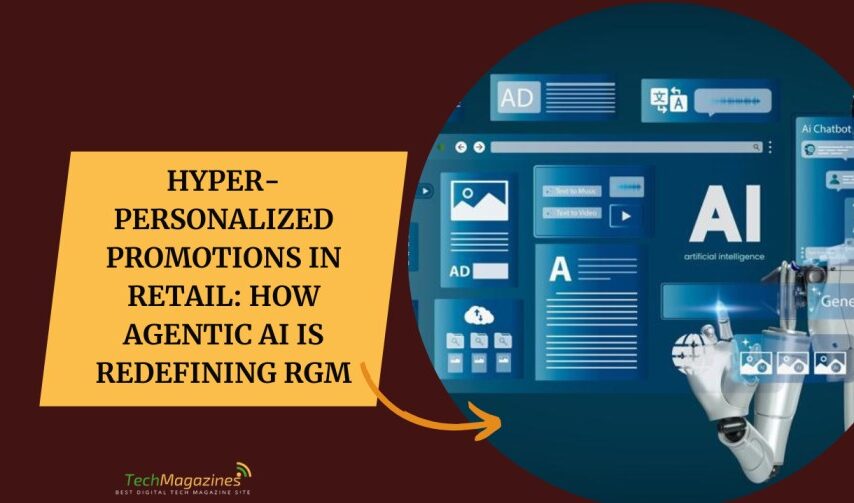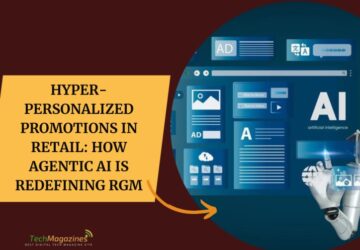20% of gross revenue flows into promotional activities for the average retailer, making promotions one of the largest and most influential levers in Revenue Growth Management strategies. Yet there is a struggle to capture the full value of promotions as growth drivers. Why? Because visibility into the net short-term and long-term impact of the promotions is surprisingly poor (given the size of the investment).
And the sad reality is – This isn’t just a ‘you’ story.
Retailers often, don’t have a granular understanding of the return on investment in promotions beyond the short term, the influence of promotions on shoppers’ behaviours, or the impact of promotions on retailers’ sales beyond the retail companies’ own brands.
The fundamental challenge lies in the growing complexity of the promotional landscape. Traditional promotional approaches struggle to effectively manage the interplay between competing business objectives including margin preservation, customer loyalty development, inventory management, and competitive positioning. The resulting inefficiency directly impacts overall Agentic AI in RGM effectiveness, creating a critical capability gap for retail executives.
The Roadblocks to Promotion Excellence
1. Limited Visibility into True ROI
Many retail executives report that they cannot accurately measure the long-term impact of their promotional activities on customer loyalty and lifetime value. And the cost of this fundamental measurement gap drives a persistent bias toward short-term metrics that can be easily quantified, such as immediate sales lift and redemption rates.
The true cost of this myopic view extends far beyond inefficient spending. When retailers optimize promotions solely for immediate results, they unwittingly train their customers to either wait for discounts or alienating them by overwhelming them with choices that make shopping harder (both eroding margin and brand perception over time).
Overcoming this challenge requires a fundamental shift in measurement approaches. Now here forward-thinking retailers have started implementing multi-dimensional measurement frameworks (backed by agentic AI in retail) that track not just immediate performance metrics but also customer sentiment, competitive positioning, and long-term purchasing behaviour. And this not just tracks immediate lift but also quantifies –
- Changes in purchase frequency and basket composition following promotional exposure
- Migration patterns between product tiers and price points
- Long-term elasticity shifts that indicate changing price sensitivity
- Impact on customer retention and share-of-wallet metrics
And we can see retail giants partnering with solution experts to get the desired results. These expanded measurement capabilities provide the foundation for truly intelligent promotional systems.
2. Channel and Timing Disconnects
Now it’s not a news that today’s retail landscape demands orchestration across an ever-expanding array of touchpoints – from in-store displays to mobile apps, social media, and beyond. With 81% of retail shoppers conducting online research before making purchases, it’s only natural for retailers to be present and serving their consumers where there are. Yet most organizations still operate with channel-specific promotional systems that create disjointed customer experiences and operational inefficiencies.
The solution to this requires more than just integration – it demands intelligent coordination that can dynamically adjust promotional content, timing, and mechanics based on real-time feedback. And most companies that uses this capability have:
- Real-time synchronization of offer availability across mobile, web, email, and in-store channels
- Dynamic adjustment of promotional timing based on individual customer journey mapping
- Automatic recalibration of channel selection based on observed response patterns
- Cross-channel attribution that enables precise understanding of promotional path-to-purchase
Going forward we see Retail AI agents providing this capability by continuously monitoring cross-channel performance and autonomously recalibrating promotional strategies to maximize overall effectiveness, rather than siloed metrics. And moving forward we will see these advanced implementations dynamically adjust not just promotional timing and channel selection but the creative elements themselves.
And with that being said – This transition from conventional integration to agentic orchestration represents a fundamental shift from coordinated messaging to truly intelligent conversation management across the entire customer ecosystem.
But now this is where we need to take a pause. Why because? We as organizations are not here to ride the ‘Agentic AI high horse’ ( 70% of all digital transformation projects fail, often due to inadequate planning or poor execution). This sobering statistic highlights a critical reality: the success of agentic promotional systems depends fundamentally on the organizational and technological foundation upon which they’re built.
The Pre-Agentic AI Readiness Checklist: Building the Foundation for Success
Our analysis of successful deployments identifies five essential prerequisites that significantly impact implementation outcomes. By evaluating your organization against these critical dimensions, you can determine readiness for agentic AI transformation:
- Data Ecosystem Maturity: Does your organization maintain a unified, accessible data environment that integrates customer, transaction, inventory, and promotional history across channels with consistent identity resolution?
- Explainability Framework: Has your organization established mechanisms to understand, interpret, and explain AI-driven promotional decisions to business stakeholders, including visualization tools and interpretability protocols?
- Ethical Guidelines: Has your organization defined explicit ethical boundaries for automated promotional decisions, including fairness requirements, transparency obligations, and intervention thresholds?
- Adaptability to Change: Does your organization have established processes for rapidly adjusting strategic parameters, business rules, and optimization objectives as market conditions evolve?
- AI Readiness: Has your organization cultivated the technical expertise, business understanding, and collaborative workflows necessary to effectively guide and govern agentic systems?
Now by answering these questions would reveal For executives planning agentic promotional initiatives, these foundational elements represent critical success factors that significantly impact both implementation timelines and ultimate business value.
Going forward with Agentic AI
One thing’s for sure – this isn’t just hype. About 75% of retailers now recognize AI agents as essential for staying competitive, and when applied to Revenue Growth Management, we’re talking about transformation, not just improvement.
What’s exciting is seeing the walls between pricing, promotions, and product placement finally come down. Agentic AI in revenue growth management technology creates that unified approach where offers actually connect with what customers want. It’s probably the biggest opportunity in retail right now – using advanced technology to nail promotions in ways that weren’t possible before.
But let’s be honest – transforming your promotional or RGM processes isn’t just another project. It requires as much focus on change management as technical implementation. The complexity and pressure to get it right can make even experienced leaders hesitate.
Whether you’re looking for a capability assessment or full transformation, consider partnering with experts like Polestar Analytics. So, are you ready to turn revenue challenges into opportunities?






